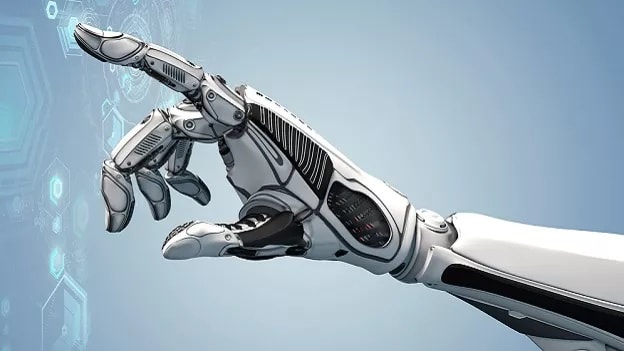Bridging the skill gap in robotics – An imperative for industry today

Picture this: Piles of differently sized packages, lying in a warehouse, waiting to be delivered to thousands of addresses. Sounds like a Herculean task? Not really. This can be completely automated by handing it over to the new age robots. For instance, an Artificial Intelligence-powered goods-to-person robot can bring the racks that store these packets to the human picker as he stands in one place, thereby saving a lot of time, otherwise, spent walking from one corner to the other and fulfilling orders more quickly. A sortation robotic solution can read the barcodes on these packets and sort them based on various pre-defined parameters (delivery area pin code, last-in-first-out, pooling of packets etc.) depending on the business need; thereby improving speed and efficiency and reducing errors. In a nutshell, the robotic solutions not only increase the speed but also cut down the errors in operations. Robotics can transform several industries by automating the operations that are complex, repetitive, tiring, or hazardous in nature. Given the benefits, the question for several industries including Retail, FMCG, e-commerce, automobile, etc. is no more about whether or not to implement robotics. It is only about when and how to do it.
While the other industries prepare themselves to reap the rich benefits that robotics brings, robotics industry itself is facing the challenge of finding and hiring the right talent. The skill gap in the robotics industry is currently hampering not just its own growth, but also of all the other industries which can be transformed by robotic deployment.
Current scenario
As per a 2015 report by Aspiring Minds, an Indian employability assessment and Certification Company, 80% of the 1, 50,000 engineering students who graduated in 2015 from more than 650 universities are not prepared for jobs. The issue turns out to be even more serious for the robotics industry, given how complex the operations are.
In the past 5-6 years, robotics has emerged as a popular academic specialization in India. Not just the crème de la crème institutions like IITs (Mumbai, Chennai, Delhi, Kanpur, and Kharagpur), IISCs, NITs, and BITS Pilani, but also many other colleges have started short-term courses, workshops, and competitions focused on robotics. Despite the abundance of these courses, not many have been able to produce professionals that are readily employable.
The reason for this skills gap is the multi-disciplinary approach required for a robotics professional, something that these courses have not been able to offer. The best way to learn robotics is to work on live projects which involve an amalgamation of software, mechanical, electronics, and firmware engineering. Some examples are: Team AcYut at BITS Pilani and Technology Robotix Society at IIT Kharagpur that have been enabling the students to gain this much-required exposure. AcYut is developing a series of indigenous and autonomous robotic platforms. Technology Robotix Society, on the other hand, has started unique ventures to explore opportunities in unmanned swarm robotics and aerial vehicles. More such opportunities for students are the need of the hour. Tier 2 and 3 engineering colleges in India too need to follow the same approach.
Start early, stay strong
Instead of restricting themselves to a single discipline, engineering students need to acquire multidisciplinary skills, right from the start. The students need to understand how hardware and software go hand in hand in creating disruptive robotic solutions. India is not the only country lagging behind in this exposure. USA and Germany too have been struggling due to the lack of an evolved ecosystem. Students need to proactively look for opportunities to work on robotics projects that solve real world problems. This can be done by proactively experimenting with the given resources and participating in various robotics competitions, workshops, and seminars. The most important thing, however, is the passion for robotics.
March together
Engineering institutes and robotics companies need to initiate collaborations for running labs and projects. The companies can recognize students with the right zeal and provide them with the right exposure through internships or short-term projects. This will not only help companies in identifying and recruiting the right talent for the long term but also prepare them for solving several industry problems through automation.
Institutes also need to encourage robotics and hardware companies to recruit students via placement cells. Even start ups should be encouraged to participate in the placement process, preferably at the start of the placement season along with the other software companies. This is important in order to make sure that mechanical and electronics students do not end up being placed with software companies. Hence, a balanced proportion of hardware and software companies need to be a part of the placement process.
To sum up, robotics needs to be seen as an amalgamation of software and hardware. Currently, there is still a long way for this vision to be achieved. For instance, e-commerce is still seen as an industry requiring software technology. However, e-commerce warehouses need robotics and automation, and thus, hardware technology for all their supply chain in the backend. Hence, artificial intelligence, machine learning, and swarm robotics need to move beyond software. It is only when software and hardware come together that the industry can be revolutionized.











